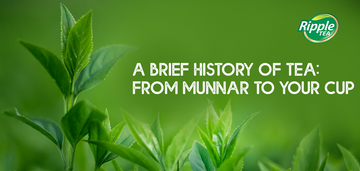A Modern Love Affair: Tea in Everyday Life
Tea drinking in India has evolved into a deeply social and personal experience. From the tapri (tea stall) to the gourmet cafe, from railway platforms to boardrooms, tea is served everywhere. The famous "chai" has countless variations—masala, ginger, cardamom, cutting chai, or just plain "kadak" (strong).
In recent years, Munnar’s tea, especially from the Ripple Tea portfolio, has seen a global renaissance. With rising interest in artisanal, organic, and single-origin teas, connoisseurs around the world are now discovering the nuanced charm of South Indian brews. This global recognition was reinforced when Ripple Tea's White Tea Silvertips bagged the Silver Medal in the prestigious ‘Global Tea Championship 2019 Fall Hot Loose Leaf Tea Competition’ held in the US. The accolades didn’t stop there—Ripple White Tea Silvertips also received the esteemed ‘Highly Commended’ award in the White–Natural category at The Leafies 2024, an international tea competition held in the UK, and was honoured with the "Best Indian Origin Tea Award" at the Global Tea Championship (GTC) in Las Vegas, 2025.
KDHP's expansion into retail and e-commerce through Ripple Tea’s online store, ChaiBazaar outlets, and product diversification into flavoured teas, essential oils, and handmade chocolates has transformed the brand into a holistic, modern tea experience that bridges heritage with innovation.
The Future of Tea in Munnar
As consumer awareness grows, so does the demand for sustainable and ethical tea production. KDHP is at the forefront of this transformation. Its estates are Trustea certified. These efforts reflect a deep commitment to environmental stewardship, ethical sourcing, and social responsibility.
Final Sip: Why It Matters
The next time you brew a cup of tea, whether to refresh your morning or calm your evening, take a moment to reflect on the journey behind it. From the ancient hills of China to the lush slopes of Munnar, and finally into your cup, tea has travelled a long way.
It has connected empires, soothed souls, fuelled revolutions, and brought people together. And in places like Munnar, the story continues, carried forward by brands like Ripple Tea—rooted in heritage, infused with nature, and poured into every cup, preserving a tradition that began centuries ago.









